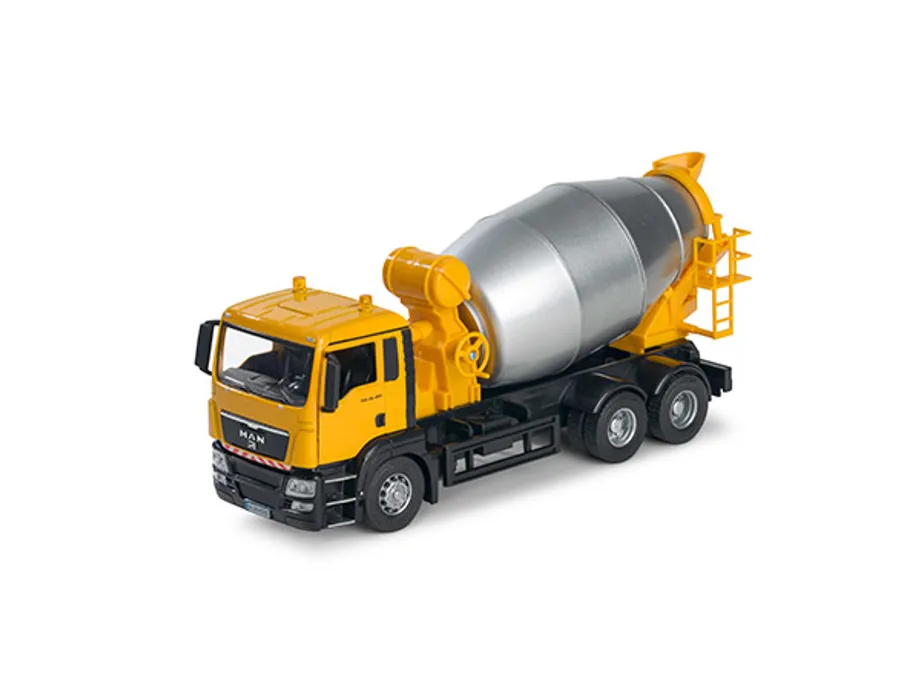Cement
Cement is a binder, a substance that sets and hardens and can bind materials together.
The word 'cement' has Roman origins. The term opus caementicium described masonry resembling modern concrete that was made from crushed rock with burnt lime as binder.
The volcanic ash and pulverized brick supplements that were added to the burnt lime, to obtain a hydraulic binder, were later referred to as cementum, cimentum, and cement. Construction cements can be referred to as either hydraulic or non-hydraulic, depending on the ability of the cement to be used in the presence of water.
Model cement mixer
This is a model of a concrete mixing transport truck (commonly known as a cement mixer). A concrete mixer homogeneously combines cement, an aggregate such as sand or gravel, and water to form concrete. The truck transports and mixes concrete until it reaches a construction site.
Trucks can be charged with dry materials and water, with the mixing occurring during transport or alternatively they can be loaded from a central mix plant where the material has already been mixed prior to loading.
The truck maintains the materials liquid state through agitation, or turning of the drum, until delivery.

